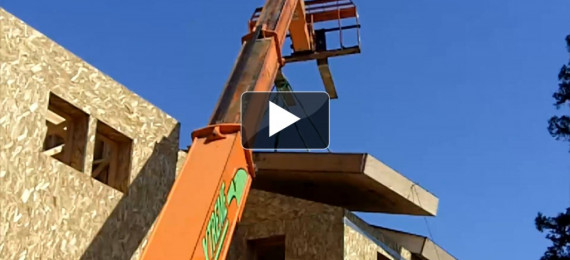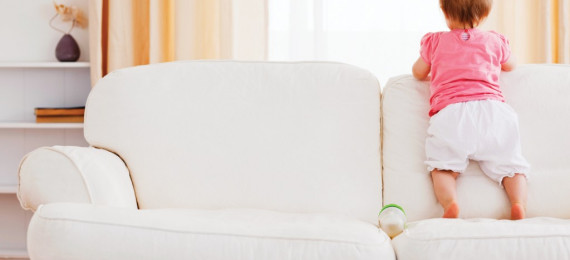These resources are from an archived version of our website. Want to see what we’ve been up to lately? Check out our new website.
Archives: Clarum Homes
Archives - Clarum Homes » Articles posted by Clarum Homes (Page 16)
Net Zero? Why and How
Posted by Clarum Homes on July 17, 2012 | Categories: energy efficiency | No comment
Our last post covered what “Net Zero” means and whether a Net Zero house is on- or off-the-grid. So why is Net Zero such a good idea? And what does it take to achieve it? The “why” is easy: Net-zero homes are cheaper in the long run. True, they're more expensive upfront, but over their lifespan, they cost less: they're intensely efficient and you can say goodbye to your energy bills. You may be eligible for tax credits. The IRS and California offers incentives for energy-efficiency; local power suppliers may offer credits, too. At Clarum Homes, we use technologies that often qualify. Net...
Read More
Are Net Zero houses on- or off-grid?
Posted by Clarum Homes on July 3, 2012 | Categories: energy efficiency | 1 Comment
And what does Net Zero even mean? A Net Zero house is one that generates the same amount of energy it consumes, through renewable sources like sun, wind or water. For example, at Clarum Homes, we can tile the roof with solar panels, so your home converts sunlight into electricity. When able to produce all the energy it uses per year on-site, it's Net Zero. As such, the Net Zero homes we build don't have to be connected to the grid But that doesn't mean they can't be. On or Off? There are benefits to being connected. When on-site energy is abundant, you can harvest the excess and sell it to the city....
Read More
Green energy expert Sean Miskelley from Clarum Homes explains the use of the Structurally Insulated Panel (SIP) Roofing System in the Palo Alto Passive home. These panels are 12? thick, giving the roof an insulation value of R44. The panels are delivered to the construction site, lifted in to place, and secured. This allows an airtight attic assembly and eliminates the need for hot, unconditioned attic spaces. In addition, it doesn’t require the venting of traditional attic vaults. The science behind energy efficiency in our building walls strips down simply into three areas: 1. Air Transfer/...
Read More
Do you have indoor air pollution? What is that chemical smell? Why am I sneezing, feeling dizzy, or coughing in my brand new home or office? Why is my child’s asthma getting worse? It could be the new carpet, the cabinetry, the paint, or the formaldehyde in the plywood. Nobody wants to have these experiences when they move into their new home. Unfortunately, most construction today is rife with chemicals and toxins that pollute our indoor air quality and negatively impact our short- and long-term health. Immediate effects of exposure to indoor pollutants include irritation of the eyes,...
Read More
Weatherizing Homes with Biobased Spray Insulation
Posted by Clarum Homes on March 23, 2012 | Categories: energy efficiency, high performance homes | 1 Comment
Insulation improves energy efficiency Often clients come to us with a home that's already designed. They ask us to help them improve a home's air tightness and thermal envelope. One straightforward solution is adding insulation. Spray foam is an effective insulation because it forms an air barrier around your structure — sealing and insulating in one step. Once it is sealed, the air inside can be controlled by your heating and air unit. In this video, we show a traditionally-framed home. Instead of installing batted insulation, we chose a bio-based spray foam insulation. This insulation...
Read More
Clarum Homes Mission & Vision Video
Posted by Clarum Homes on February 6, 2012 | Categories: custom homes, energy efficiency, high performance homes, passive home | 1 Comment
In this video, passive home experts John Suppes and Sean Misskelley discuss the Clarum Homes mission and vision of building comfortable high-performance passive homes. If you look at the average home, it's being built in the same way as homes were built 40 years ago. Nothing has really changed. In contrast, Clarum Homes is unique because we are continuously working to lead and innovate the way homes are built. Our entire team focuses on the following: sustainability in building materials thermal envelope so that the homes use less energy to heat and cool indoor air quality making...
Read More
Passive Homes: What is it like to live in a passive home?
Posted by Clarum Homes on January 30, 2012 | Categories: custom homes, energy efficiency, high performance homes, passive home | No comment
Clarum Homes Owner John Suppes and Director of Construction Sean Misskelley discuss building and living in passive homes. We build passive homes for their sound ethics, aesthetic beauty, internal comfort and interior air quality. A passive home is simply a building that employs a set of advanced building technologies to achieve extreme energy efficiency. Energy consumption is reduced by 90% or more compared to that of conventional homes. And these efficiency gains aren't due to some weird, boxy, ugly building design. Passive homes are elegant, comfortable living spaces with beauty that can rival...
Read More
Passive Home Brochure
Posted by Clarum Homes on January 11, 2012 | Categories: passive home | No comment
What is Passive? “The rigorous standard for energy efficiency in building that requires little energy for space heating or cooling, reducing ecological footprint.” Passive is healthy The passive home is healthy — for your family and the environment. Nontoxic building materials are used throughout. Moisture and pollutants are continuously removed from indoor air. Enjoy exceptional indoor air quality with each breath you take. Passive is socially responsible The passive home is more than just sustainable. In fact, it’s far greener than almost anything currently labeled “green,”...
Read More
Solar Thermal System Results in 80% Less Energy Use!
Posted by Clarum Homes on October 17, 2011 | Categories: energy efficiency, passive home | 1 Comment
Sean Misskelley from Clarum Homes talks about the solar thermal system in the Menlo Passive Home Project. The house is equipped with a 3-panel 120-gallon Velux solar thermal system with a high-efficiency vortex made by A.O Smith as a back-up water heating source. This system is designed to offset approximately 80% of the energy needs for heating the home's water and up to 50% of the home's demand for its space heating. This system is also used inside the home in conjunction with the heat recovery ventilation system with a hydronic in-line heat coil. This system heats the water on the roof,...
Read More
Solar Photovoltaic Electrical System in a Passive Home
Posted by Clarum Homes on October 13, 2011 | Categories: energy efficiency, passive home | No comment
Energy and Green Building Expert John Suppes of Clarum Homes explains the Photovoltaic Electrical System at the Menlo Passive Home Project. We installed a 4-kilowatt Sharp Solar Panel Package System with Enphase Micro Inverters because of the shading issue - these perform much better when there is shading on the panels. This system should provide more electricity than is used in the house, so Clarum Homes installed an electric car charging station in the garage. There is also a 3-panel 30,000 kilo BTU solar thermal system on the roof, which will provide 90% of the hot water needs and up to 40% of the home's...
Read More















